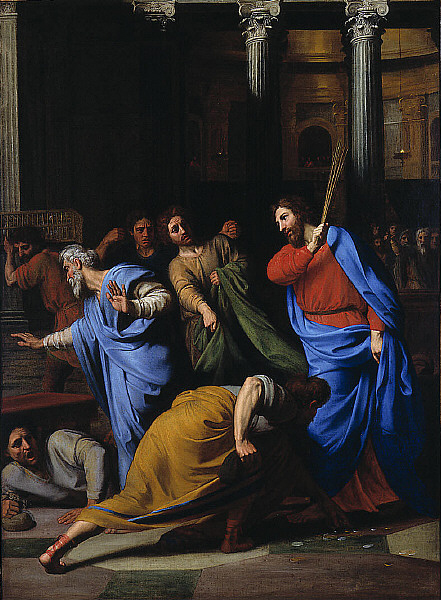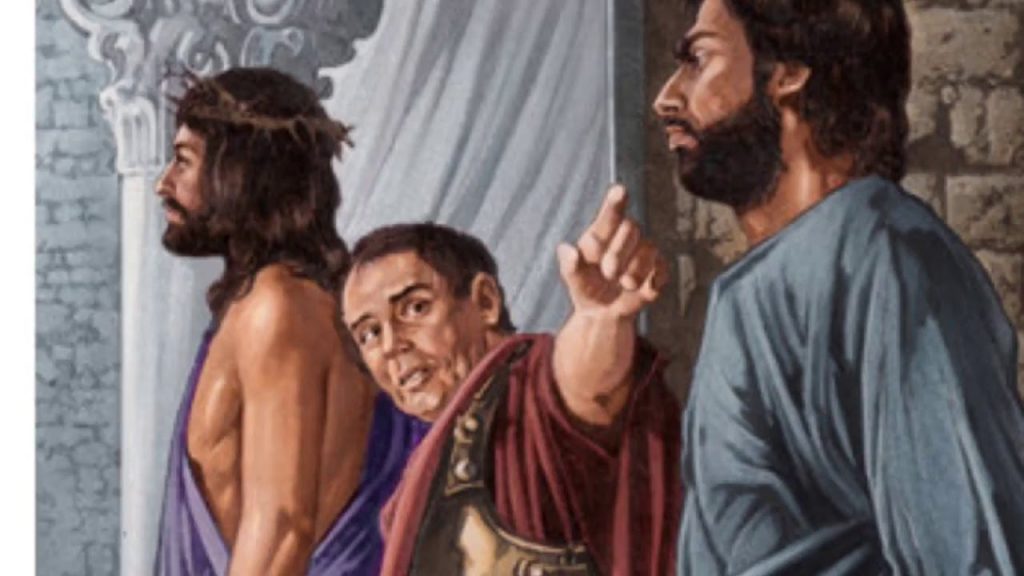In the ancient world, a world which was by no means as primitive as we sometimes like to think, the scientific study of the heavens was known as Astrology. Then, gradually, this term began to be associated with what orthodox scientists regarded as the lunatic element of star-gazing, the art which saw in the position of the stars and planets at a given moment signs of good or bad fortune for human beings. Feeling that this denigrated their scientific method, those who applied observation and reason to the stars and suns of space left the predictors to get on with things, left them with the term “Astrology” and renamed the scientific side of things “Astronomy.”
I am not passing judgment either way on the rights and wrongs of astrology, indeed I am not qualified to do so. I mention the above purely as a reference to reported history, and because I believe that the time has come to make a similar change with regard to the use of the term “Theology.” Theology, in my view, has become discredited by ignoring observation and reason in favour of sometimes very convoluted ways of making the “facts” fit the doctrine. We need to move towards a much more scientific and empirical way of looking at the claims of religion, and to do that we first need to abandon the use of the term “Theology” replace it with something else. I suggest “THEONOMY” The farcical reasoning of many theologians in the past has meant that the discipline is so discredited that only by adopting a new name, and accepting the separation from the past that such a change implies, can there be any hope of acceptance.
Starting with an open mind and working from the evidence to a conclusion is not an easy path, but it is a very rewarding one. I would like to share with my readers the results of one observation of something strange which hit me between the eyes, as it were, many years ago.
I was studying the Gospel of Saint Luke when a massive contradiction in that record struck me. In chapter 22 verse 36 Jesus tells his disciples to buy swords even if they have to sell their clothes to do so. This stood out in stark contrast to the pacifist teaching of Jesus during his ministry in Galilee, and the issue was made all the more puzzling by the fact that, according to Luke’s account, when Peter lashed out with a sword a little while later, Jesus rebuked him! Matthew makes the rebuke of Jesus even stronger, having the Master utter the famous words “They who take the sword shall perish by the sword.” (Matthew 26.52.)

This was very puzzling, and led me to make a more careful study of the events of the Passion Week than I had hitherto done. As I did this it became obvious that the character of the person who rode into Jerusalem on a donkey was very different from the personality displayed by the gentle, caring Prophet of Galilee. Suddenly the reader is faced with the strange phenomenon of the teacher who taught pacifism and non-resistance now whipping moneychangers out of the Temple, cursing fig trees without reasonable cause, and seeking to arm the disciples. This violent personality holds sway until the visit of the Master and the disciples to Gethsemane after the Last Supper, and then with equally remarkable suddenness the characteristics of the central figure is reversed and we are face to face with the non-resister of the northern ministry appearing before Pilate.
These discrepancies were so glaringly obvious that it seemed to me that someone must have spotted them before, and I began a search to discover if there was any reference to the problem in theological writings. There was. I discovered that a group of German scholars, belonging, I believe, to the Aufklarung (Enlightenment) School had identified the problem in the early 1800’s and had considered that the most likely explanation was that the central figure of the Passion Week was not Jesus at all but an identical twin brother of his, who impersonated his peaceful twin in order to take the throne of Israel. These scholars accepted that there were indications of a concerted attempt at the time to restore the Royal House of David. I was not satisfied with the twin brother hypothesis, as I could not believe that the disciples would have been deceived by such an impersonation, especially as the alleged twin brother was so different from the character they had been used to. Regrettably over the years I have lost the notes which I made at the time, and have been unable to rediscover the references to this problem in the writings of the Aufklarung School.
Theologians nearer to our own time have also identified the problem, but unlike the Aufklarung thinkers they have tended to avoid the implications. Montefiore, for example, considers that the swords which Jesus commanded his followers to buy were purely symbolic, a form of prophecy which looked ahead to the way in which the disciples, after the Resurrection, would have to fight against difficulties to spread the gospel. I find no justification in the Lucan account for this view, which frankly strikes me as being an evasion. Around the turn of the century Johannes Weiss also propounded a similar symbolic view of the troublesome swords, likewise holding that they represented the future condition of the disciples, who would face such opposition and difficulty as the went around preaching the Gospel that they would have to hack their way through the difficulties, the swords standing as symbols for the moral fight. This also seems highly fanciful and is not supported by any evidence. However, the need of such evasions merely serves to highlight the fact that there is a problem.
Further study revealed other ways in which the central character of the Passion Week differed from the Galilean. During that week the leader showed a strong tendency to make mystical predictions about the future. Foretelling the future was rare in the Galilean ministry, and when it did occur tended to apply to things which could be reasoned out very easily from the available facts – a kind of prediction which we all make every day, when, for instance, we say “I’ll be there.” It was also clear that even the beginning of the period is uncharacteristic of Jesus of Nazareth. The entry into Jerusalem was obviously intended to be the fulfillment of the Old Testament prophecy given in Zechariah chapter 9, verse 9, that the King of Israel would enter in such a manner. In other words, the events of Palm Sunday were an attempt to re-establish the Davidic Monarchy – something Jesus had always resisted, although the people had on at least one occasion sought to crown him, the story being recounted in John’s Gospel, chapter 6, verse 15. It needs to be made clear at this point that the nationalistic feeling of the time did not regard Herod as a legitimate King, for he was not of David’s line. Herod was in fact a puppet of Rome.
As I have mentioned above, the approach of the Crucifixion heralds a change back to the gentler character, and the Jesus who seemingly told his disciples to buy themselves swords now utters the words “No more of this” (Luke 22.51.) when Peter lashes out with the sword which he had clearly obtained in advance of the commandment to buy arms. Matthew’s even stronger reference to this event has also been referred to above. This transformation occured when the Master and his disciples went to Gethsemane after the Last Supper. A militant sword-purchaser went into the olive grove and a pacifist came out. What really happened?
To make any sort of sense out of this it needs to be accepted that Jesus was of the Royal line of David. The Gospels are in no doubt about this, the family trees of Joseph the father of Jesus as set out in the Gospels of Matthew and Luke link him with the ancient King, and Jesus is frequently referred to in the Gospels by the Royal title “Son of David.” In other words, Jesus was the Messiah, the rightful King, for that was what the term “Messiah” meant. The Christian Church has taken over the term and shamefully altered its meaning. It did not indicate that Jesus was the Son of God or the redeemer of mankind. It did not mean that he was Divine. It simply meant that he was a common or garden King, or at least had the right to be one if he so chose. The people would not have chosen to attempt to make him a King by force, as John’s Gospel states, if he had not been of the line of David. In those days the populace hoped that the Messiah would liberate the land of Abraham, Isaac and Jacob from the hated Roman yoke and it would have been strange if there had not been considerable pressure on Jesus to be anointed King and placed on the throne of his forefather David.
Jesus, however, did not want the throne. He was a pacifist who recoiled from the militancy which was all around him. He advocated non-resistance. “If any man strikes you on the right cheek, turn to him the other also.” “Whosoever shall compel you to go a mile, go with him for two miles.” The latter was a reference to the right of a Roman soldier to force any male to carry his kit for one Roman mile, or to bear the cross of a condemned criminal for up to the same distance. These quotations from the words of the Master make his attitude very clear. His actions matched his words as he shunned the politics of the day and devoted his life to the service of mankind.
The people, however, were hungry for a restoration of the ancient monarchy, and if Jesus would not take the throne then they would naturally look for another valid representative of the ancient House, hopefully someone who would fulfil their expectations and lead them in battle against the Romans. Is it possible that the German theologians were correct, that the person who rode into Jerusalem on a donkey on Palm Sunday was not Jesus at all, but an alternative Messiah? If so, who was he? An identical twin brother would fit the bill admirably if the only issue was the hereditary Messiahship, but as I have indicated above, I consider such a deception to be impossible. And anyway, why did the German scholars have to assume that the figure of the Passion Week was believed by the disciples to be Jesus? Could not the disciples and others, having been disappointed in their hopes that Jesus would liberate the nation from the Romans, have consciously chosen to follow someone else?
If this is so, then the Gospel writers have clearly avoided making the issue specific, an indication that the Gospels are not as open and truthful as we have traditionally believed. Clearly they cannot be totally accurate, as there are contradictions in them – consider, for example, the four accounts of the empty tomb which differ widely. I refer to the empty tomb rather than the resurrection because there is no account of the resurrection of Jesus in the Bible, the story being taken up when it was all over and the tomb left empty. This question of the watering down of the issue by the four evangelists serves to turn the spotlight on the whole Passion Week discrepancy of the reliability of the Gospels, which show much evidence of being biased towards a particular philosophy rather than being independent accounts, and show also evidence of having been edited after writing. Incidentally, I find no problem with slight differences between the accounts of the same incident by different Gospel writers. As any police officer experienced in taking statements after an incident knows, witnesses seldon agree completely. Indeed, too much agreement is often regarded as indicative of collusion – human beings are expected to be fallible! It will by now be clear to the reader that I do not accept the traditional view of the infallibility of Scripture.
This is therefore an immensely grey area and we are up against not only the unreliability of the ancient records but also the recurring problem for historians of Christianity, namely the paucity of historical information about Jesus. We do, however, have to attempt an explanation for the strange contrast between the two periods mentioned in the Gospels, and my own theory about this, outlined below, is not meant to be a final answer but rather an attempt to get the debate going by positing what I consider a possible – even probable – scenario. Incidentally, I take the view that the very fact that this contrast is not entirely left out of the story of Jesus by the Gospel writers is evidence that there is something in it. I am sure that they would have liked to avoid it, but they were unable to, so there comes into play the old axiom that when a writer records something embarrassing to his own side it is very likely to be historical. This does not mean that the scribe has not made such amendments as he could get away with to play down the difficult matter, but it does mean that the basic story is founded on fact.
So who could it have been, this mysterious figure who rides into Jerusalem in a manner clearly intended to fulfil the ancient prophecy that the King would come riding on an ass? The political ethos of the times dictated that it would have to be a descendant of King David, and to be the legitimate Messiah he would have to be the next in line to Jesus. If we take the traditional view that Jesus was unmarried and childless, then his brother James would be the natural successor. The character who rode into Jerusalem, however, does not seem to be at all like James, as he is revealed to us in other places. So the intriguing possibility arises that the phantom figure was in fact a son of Jesus.

Was Jesus married? In the light of the Jewish attitude to marriage, in which a single man was seen as an oddity and disapproved of, it seems likely that he was. In the accounts of the dawn visit to the tomb of Jesus by a group of women Mary Magdalene is given priority in the lists in all of the synoptic gospels. In John she is named as the only visitor. Jewish rules of precedence, I am given to understand, always place first on such a list as we find in the synoptic gospels the wife of the deceased. Could Jesus have been married to Mary of Magdala? If this is the case then he could well have had a son, and it may be that such a son of Jesus attempted, on the Sunday before the Crucifixion, to restore the ancient throne of Israel, doing this by default as it were, as his father had clearly no interest in matters political or military.
I have no difficulty at all in accepting the idea of a married Jesus, but for some reason not readily apparent the Church has insisted that he was not, and could not be. There seems to lie behind this assumption of his celibacy an implication that marriage and sex are somehow unclean, a point advocated by Saint Paul, but one which I reject.
This scenario leaves us with the problem of the character reversal on the following Thursday evening, but there is in the Gospels an indication of what might have occured. At Bethany there was an anointing, and it seems clear from the text that this was a Royal anointing, in other words the creation of a Jewish King. The possibility I present is this. Jesus of Nazareth, hearing of developments in Jerusalem, and realising that his son’s action might well spark off a bloody confrontation with the Romans, decided that new occasions taught new duties and that the only way he could defuse the situation and restore peace was to accept the throne himself and thus make null and void the claim by default of his son. After accepting the crown at Bethany Jesus walked to Gethsemane, informed his son that the game was up, and thus deflected the imminent risk of war.
In support of this argument I offer the stories of the trial of Jesus. Pilate is clearly sympathetic to him. This is not in line with what we know of the character of the Roman Prefect, but is quite understandable if he had a vested interest in keeping Jesus alive – for if Jesus died his son would be back on the throne and the threat of an armed uprising by the Jews would be re-activated. Pilate therefore attempts to get Jesus released, but being unsuccessful in that takes to his second line of defence, namely to get him down from the cross alive. Whatever the cost, the pacifist, non-resister from Galilee must remain on the throne of Israel, and let us not forget that the superscription which Pilate ordered for the cross read “Jesus of Nazareth, the King of the Jews.”
I admit to a great difficulty here. My hypothesis requires that the Last Supper should have been attended by the true Jesus, for around that supper table there was enacted a series of events which indicated that an attempt was being made to give Jesus safe passage to the house of Pilate. Yet the Last Supper occurs, apparently, before the restoration of the Galilean character, and it appears that around this time Jesus was actually in Bethany being anointed. I hope that it does not sound like an evasion when I suggest that the chronology of the Gospel writers might have got mixed up. The story of Judas going out from the supper room to betray his master has strange elements. If it was a betrayal, why was there no resistance from the other disciples? And why, when Jesus said that one of them would betray him, did they ask whether they were to be the guilty ones? It does not make sense unless we assume that Jesus wanted the betrayal, that one of the disciples had to do it, that a method of selection by apparent chance, a sort of drawing the short straw scenario, was implemented, and Judas drew the short straw. Incidentally, Jewish theology would not have seen the outcome as the result of sheer chance, but would assume that God directed the casting of lots.
The “betrayal” by Judas, then, could have been an attempt to get Jesus safely through a now hostile city, to Pilate’s house. The city would be hostile because the people had been deprived by Jesus of the possibility of having the King they wanted, namely his son, and it was necessary for Pilate to know where Jesus was, have him clearly identified to the soldiers, and bring him to safety.

The interest of Pilate in keeping Jesus alive extends beyond the trial to the Crucifixion itself. The people call for the release of Bar Abbas and want Jesus eliminated, and there may well be a great significance in the meaning of the name “Bar Abbas.” It may be translated as “Son of the Master.” Is it possible that this popular figure was in fact the second Messiah of the Gospels, a son of the Master who tried to seize the throne? Then at the execution itself there is a clear attempt to bring Jesus down from the cross alive. The chief evidence for this is that the soldiers were instructed not to break the legs of Jesus. The breaking of legs was always done when an execution took place on Jewish territory and the Sabbath was approaching, it being a concession by Rome to the Jewish antipathy to having bodies or living victims hanging on the cross over the Day of Rest. When the victim’s legs were broken death came quickly, for the crucified person could not breathe without pushing up and down with the legs. To make an exception to this mutilation was most unusual, even unlawful, and such a decision would never have been made by the soldiers on duty, not even by the Centurion in command of the execution squad. It could only have been made by Pilate himself, and the only possible reason was that the Prefect wanted Jesus to survive. This matter is set out in detail in a remarkable book by a Jewish scholar, Hugh Schonfield, entitled “The Passover Plot.”
So was there a second Messiah in the Gospels? If my explanation seems far-fetched, so be it. I admit that there are many difficulties with the “Son of Jesus” scenario. Nevertheless it fits fairly well with the recorded evidence, and whether or not my interpretation of history is true in that regard, there remains a clear indication in the Biblical record that the table-overthrowing, fig tree-cursing, sword buying character who walked the streets of Jerusalem in the spring of an unidentified year was not the peaceful prophet of Galilee.
It may be objected that Jesus was too young at the time of the Crucifixion to have had a son old enough to take an active interest in politics. There are two traditional views of the age of Jesus when he was crucified, making him alternatively thirty or thirty three years old. There is no evidence to support either figure, but there is evidence that he was older. In John’s Gospel, chapter 8 verse 57 some people say to Jesus, “You are not yet fifty years old, and have you seen Abraham?”
Such a statement might be made to a man in his forties, but if he were apparently younger than that, say in his thirties, then surely the chosen expression would be “You are not yet forty years old —- “. The political scenario which is revealed in the Gospels suggests that the crucifixion took place late in the Prefecture of Pilate, for instance the anxiety displayed by Pilate when he was threatened by the Jews would have been more likely in the closing period of his office, when he was not in favour with the Emperor and any adverse report would have been threatening. I suspect therefore that the Crucifixion took place in 35 or 36 AD, the latter date marking the final year of Pilate’s term of office, and if Jesus was born in 6 or 7 BC then he could have been in his early forties. He must have been born before 4 BC when Herod the Great died. Having a son of around twenty is therefore by no means out of the question, and it is not unbelievable that at such an age a youth fired with political and nationalistic zeal, and armed with the privilege of being a son of David, might have sought to fill a vacuum in the life of the nation. Perhaps it happened, perhaps it did not, but I think it a distinct possibility.



Leave a Reply